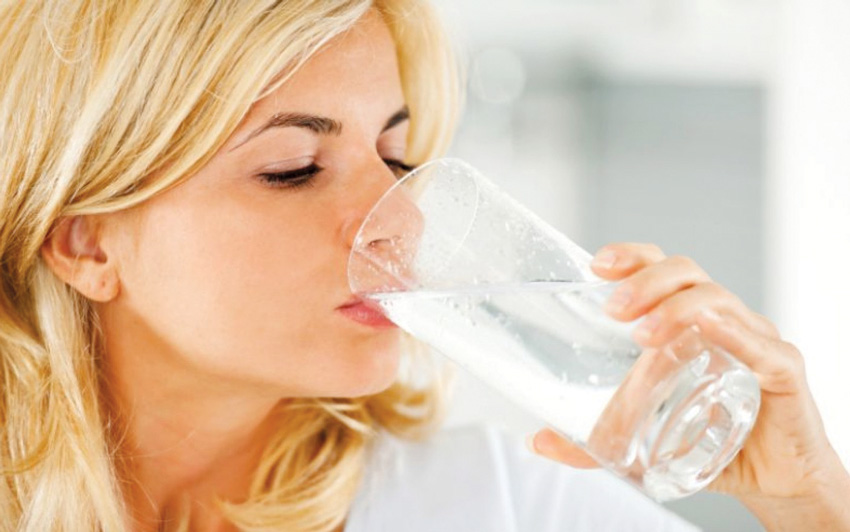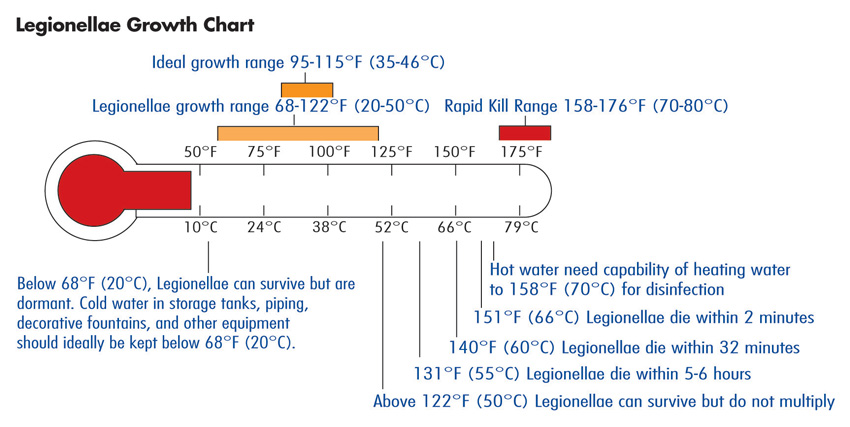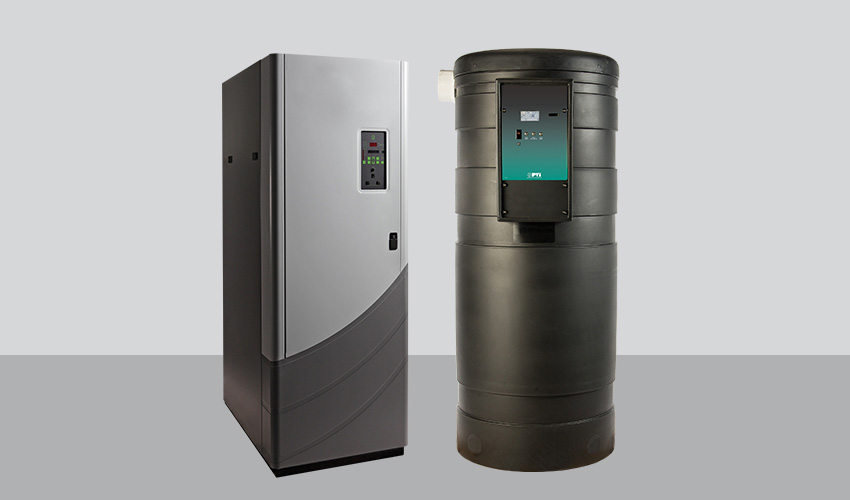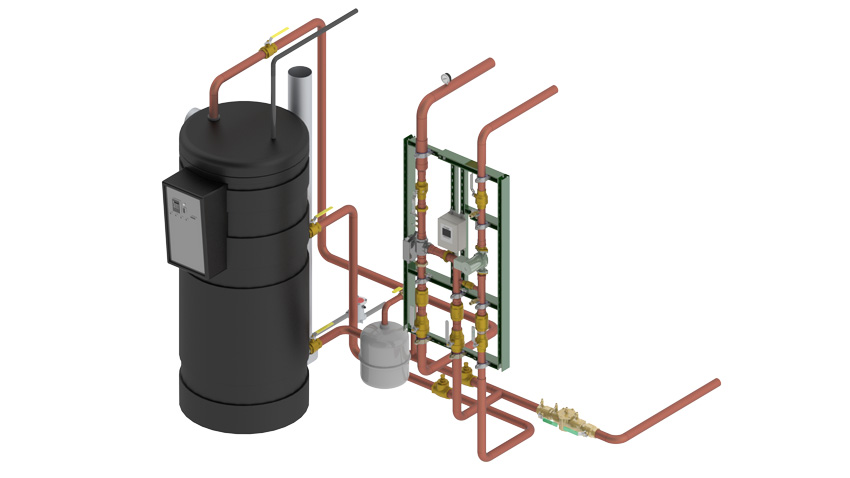Water Safety and Efficiency in Hospitality Buildings
Guest Safety and Water
Beyond customer satisfaction and comfort, design professionals and hospitality facility staff share in the responsibility of providing safe environments for their guests. Public safety is a common concern in a variety of situations, but there are some very specific ways that water is a player in hospitality settings. While operations and management are important in this regard, so is the fundamental design of water systems to address a few key areas.

Abundant, pure drinking water is typically needed for food service and beverage operations in hospitality settings.
Protection Against Scalding
The point where human skin meets heated water is a common safety concern since it is well known that people start to experience pain when water is at or above 106 degrees Fahrenheit. Scalding and burns can occur when the temperature is above that, with severe burns possible in only a matter of 2–3 seconds at 140 degrees Fahrenheit. It is significant, therefore, that a survey conducted at major hotel chains across the United States has revealed a vast majority of hotel sinks, bath, and shower fixtures deliver water at scalding temperatures. Of the first 100 rooms surveyed, more than 91 percent delivered maximum hot water temperatures for showers in excess of 115 degrees Fahrenheit (46.1 degrees Celsius), while 78 percent provided water in excess of 120 degrees Fahrenheit (48.9 degrees Celsius). Clearly, there is a need to address limits of hot water temperature as well as control.
Protection Against Legionnaires’ Disease
Some diseases are based on bacteria that grows in water. When the water/bacteria mix is released into the air as vapor or moisture (as in showers, fountains, and some HVAC equipment), it can be inhaled and infect a person with the disease. The most well-known example of this that has received a lot of attention in hospitality facilities is Legionnaires’ disease. Its name comes from one of the first, and most public, discoveries of the condition, which occurred at a 1976 convention of the American Legion where a number of attendees (i.e., Legionnaires) became sick and/or died. The cause was ultimately traced to infected airborne moisture in the HVAC system of the hotel. Since then, the Centers for Disease Control (CDC) have investigated the condition at great length and tracked anywhere from 8,000–18,000 cases per year of people that have become infected in the United States. Based on this information, the American Hotel & Lodging Association (AH&LA), in its Hotel Safety and Security Assessment Form, recommends that procedures be in place to monitor and mitigate the Legionella bacteria that causes the problem.

Legionella bacteria and other microorganisms can grow in the water in a building, particularly when the water temperature is favorable.
The American Society for Heating, Refrigeration, and Air-Conditioning Engineers (ASHRAE) has taken note of the connection between water-based mechanical and plumbing systems in buildings and legionella bacteria growth. It first published a guideline in the year 2000 titled Guideline 12-2000: Minimizing the Risk of Legionellosis Associated with Building Water Systems, which is commonly referred to as ASHRAE Guideline 12. Upon further review, it has also published the updated ANSI/ASHRAE Standard 188: Legionellosis: Risk Management for Building Water Systems, or ASHRAE 188. This publication has become the accepted standard for all types of facilities to address the control, monitoring, and treatment of legionella bacteria through a seven-step process to create and maintain an ongoing Water Management Program. Under such a program, design professionals are required to provide expertise on identifying and analyzing all aspects of the water systems. Then they need to recommend control measures and be involved with ongoing monitoring.
Protection Against Slips and Falls
As is the case in many facilities open to the public, slips and falls are the number one cause of accidents in hotels, restaurants, and public buildings according to the Bureau of Labor Statistics. This becomes particularly critical as the aging population in the United States is growing rapidly. The number of people age 65+ in 2010 (40.2 million) is projected to more than double by 2050. Slips and falls are due to a variety of conditions but are certainly exacerbated by the presence of water on a floor. That could be true in hospitality spaces, such as bathrooms open to guests or in behind-the-scenes places like commercial kitchens and laundries. In all of these locations, proper floor drainage becomes important so any spills, overflows, etc. can be addressed promptly. Sudden changes in shower water temperature (aka thermal shock) may cause a guest to slip and fall. Slips and falls can also take place outdoors, particularly in cold weather that creates icy walkway areas. In those cases, there is a need to incorporate a means to remove ice from at least the most active walking areas.
In light of all of the water demand and public safety items discussed above, we can now turn our attention to the types of water management solutions that can be considered as part of an overall design for hospitality facilities of all types and sizes.
Heating of Water
Providing hot water for guest and operational needs in a hotel or motel setting can be quite demanding and expensive if not designed and managed properly. Commonly, one or more central hot water heaters are employed that use natural gas or other energy sources so efficiency and high output become important. These water heaters are typically combined with pumps and piping to create a continuously recirculating system of hot water distribution. In that way, hot water is always available in the piping system, not just the water heaters, so there is little or no wait time when hot water is called for.
One of the biggest operational challenges of providing hot water is to assure that the demand can be met at all times. As noted already, hot water demand in guest rooms typically spikes in the early morning hours when people awake and shower and again late at night before people head to bed. That means the system needs to supply a lot of hot water during these peak times, but not so much in between. A popular approach to address this condition is to use high-efficiency, high-performance hot water heaters that are modular. In this way, multiple units can provide the maximum amount of hot water when needed, then step back to only one or two units when the demand decreases. Because these systems are typically compact and efficient, they can take up less floor space in mechanical rooms than older, traditional hot water boilers.

High-performance, efficient, modular water heaters can provide the needed amounts of hot water for a range of hospitality requirements.
Heating water is also commonly used to address legionella bacteria. The ideal range of temperature for the bacteria to grow is 95 to 115 degrees Fahrenheit, but the bacteria is known to grow and be active anywhere between 68 to 122 degrees Fahrenheit. The bacteria will die slowly when temperatures in the water reach 131 degrees Fahrenheit and rapidly between 158–176 degrees. At 124 degrees Fahrenheit, bacteria will not multiply. Based on this, Guideline 12 recommends hot water should be stored above 60 degrees Celsius (140 degrees Fahrenheit) and circulated with a minimum return temperature of 51 degrees Celsius (124 degrees Fahrenheit). It further suggests that in case of an outbreak being detected, a high-temperature flush of the system can occur to create a rapid kill of bacteria. Obviously for either of these conditions to happen, there needs to be proper control of the temperature of the water and the ability to produce these temperatures consistently.
Traditional Mixing and Tempering of Hot Water
Providing lots of hot water in a hospitality building is good for meeting demand and controlling legionella, but not good when it presents a scalding or burn potential. Therefore, the mixing of hot and cold water or “tempering” the temperature is an important design and operation consideration. This is why plumbing codes limit the maximum temperature exiting a fixture at 120 degrees Fahrenheit with the expectation that people can readily control the mix of cold and hot water at the faucet to meet their needs. However, there are plenty of things that can change the water temperature coming out of those showers and faucets. For example, pressure fluctuations can cause hot and cold water to move less predictably through the piping system, creating mixture imbalances at the point of use. Incorporating thermostatic mixing valves into the system is one way to help compensate for those discrepancies and deliver a more predictable and safer water temperature output.
When looking at mixing valve systems, there are two fundamental types. Both types are common and have a range of standards issued by the American Society of Sanitary Engineers (ASSE) relevant to their particular usage. A point-of-source (POS) system locates valves at or near the water-heating source, in the mechanical room (i.e., the tanks), and typically has a higher capacity for controlled temperature water. A point-of-use (POU) system uses multiple smaller mixing valves at or near plumbing fixtures, such as showers, lavatories, tubs, etc. POU systems are particularly useful to mitigate the risks of scalding when recirculating water at higher temperatures is employed throughout a building to control bacteria/legionella. In some cases, supplemental or separate, dedicated water heaters may be appropriate for laundry and kitchen areas if the demand for high-temperature water is significant enough. Either way, traditional mixing valves can be an appropriate method to temper and control water temperature, but the range of that control can vary quite a bit depending on the make and model of the valves installed.
Digital Mixing and Tempering of Hot Water
A more advanced approach to mixing water and controlling temperature more precisely is found in computerized digital mixing systems. In this type of system, digital control modules paired with fast-response sensors, and electronically actuated valves are used to allow faster and more accurate response to constant changes in the mixed water delivery demands, often anticipating system changes before they occur. As a point-of-source system, a digital mixing and recirculation station can provide precise control of hot water delivery within 2 degrees Fahrenheit of the set point, surpassing industry standards for mechanical systems. Further, it eliminates temperature creep within the system, thus eliminating the need for balancing valves. All of this means that it can more precisely be controlled to safely and efficiently provide the needed amount of hot water to hospitality guests and staff.

Digital mixing systems have the capability to deliver mixed hot and cold water throughout a facility within 2 Fahrenheit degrees of a controlled temperature.
Digital mixing and recirculating systems can also be used to mitigate legionella bacteria growth in the heated water. In particular, a sanitization or disinfectant mode can be triggered to raise the temperature above 158 degrees Fahrenheit to induce a “rapid kill” and purge all legionella bacteria. Passcode protected, facilities preselect the exact temperature and time duration for each purge. Concurrently, the digital system can control the circulation pump to prevent stagnant conditions or maximize flow rates. Finally, since most large facilities use some type of building automation system, a digital mixing system can be linked to the larger system to communicate and control temperature, pressure, flow, and energy consumption as part of an overall operations and maintenance plan. It also makes documentation and verification more straightforward in a water management program as called for in ASHRAE 188. From a specification standpoint, most of these systems are easy to install since they typically come pre-piped, pre-wired, and tested, allowing them to carry a warranty from the manufacturer for up to five years.










